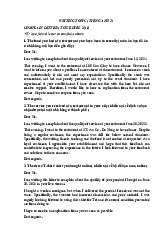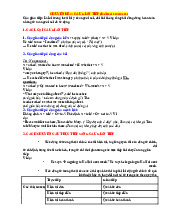
Preview text:
The pie chart illustrates information about the causes of worldwide land degradation and the
table shows data owing to causes in North America, Europe, and Asia during the 1990 decade.
Overall, overgrazing, deforestation, over-cultivation, and urbanization are all noteworthy causes
of land degradation globally, but the causes of less beneficial land in specific regions vary. In
general, the main cause of land degradation was overgrazing which crushed a huge rate of
worldwide land with 30 percent. However, this is closely followed by deforestation (25%),
agricultural activities (23%), and urbanization (15%) with the remaining 7% being made up of
mining activities. Concerning the table, within the 1990s the North American region had the
least sum of degraded land at just 6%. In this range, the major proposition of land loss is the
result of over-cultivation (3.8%). Including to this circumstance, the main figure in Europe is
the same as the North America, with 9% of total land affected by overgrazing. In general,
overgrazing is primarily responsible for land degradation in Europe, the following factor is
deforestation, urbanization, and mining activities account for small amounts. Unlike these areas,
the total land degradation in Asia (32%) is significantly more compared to the amount in North
American and Europe. The deterioration of land quality in Europe has numerous vital causes
such as deforestation (9.8%), overgrazing (7.5%), and agricultural activities (7.7%). Moreover,
these components bring in Asia region more deteriorated effects than others because the
activities of reforestation do not go abreast to the dramatic cultivation.




